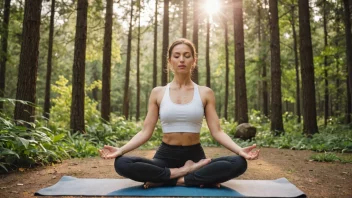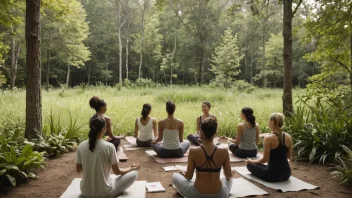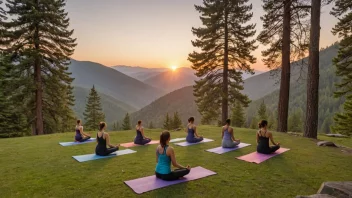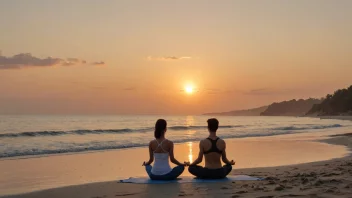In a world bustling with constant noise and distractions, the idea of a silent retreat can seem both daunting and alluring. Silent retreats offer an opportunity to disconnect from the chaos of daily life, allowing individuals to immerse themselves in stillness and self-reflection. This guide delves into the essence of silent retreats, exploring their benefits, what to expect, and tips for making the most out of your experience.
Understanding Silent Retreats
Silent retreats are structured programs where participants refrain from speaking, often for several days or weeks. These retreats can take place in various settings, from serene forest cabins to luxurious wellness centers. The primary goal is to create an environment conducive to introspection and personal growth.
The Purpose of Silent Retreats
The primary purpose of a silent retreat is to encourage participants to turn inward. By eliminating external distractions, individuals can focus on their thoughts, emotions, and spirituality. Many people find that silence enhances their mindfulness, leading to greater clarity and insight.
Historical Context
Silent retreats have roots in many spiritual traditions, including Buddhism, Christianity, and Hinduism. In these traditions, silence is often seen as a pathway to deeper understanding and connection with the divine. The modern silent retreat movement has grown in popularity, attracting people from diverse backgrounds seeking peace and tranquility.
Benefits of Silent Retreats
Participating in a silent retreat can provide numerous benefits for the mind, body, and spirit. Here are some of the most notable advantages:
- Enhanced Mindfulness: The stillness of a retreat cultivates mindfulness, allowing participants to become more aware of their thoughts and feelings.
- Stress Reduction: Silence can significantly lower stress levels, helping individuals to relax and recharge.
- Increased Clarity: Without the noise of daily life, many participants report experiencing greater clarity in their personal and professional lives.
- Spiritual Growth: Many find that silent retreats deepen their spiritual practice and connection with themselves.
- Improved Emotional Well-being: The introspective nature of silent retreats can lead to emotional healing and resilience.
What to Expect During a Silent Retreat
Understanding what to expect can help alleviate anxiety and enhance your retreat experience. Here are key aspects to consider:
Daily Structure
Most silent retreats follow a structured daily schedule that includes meditation, yoga, and mindful walking, interspersed with periods of silence. Participants may engage in guided sessions or practice independently. Meals are usually taken in silence, allowing for a mindful eating experience.
Rules and Guidelines
While each retreat may have its own rules, common guidelines include:
- Maintaining silence throughout the retreat.
- Limiting or avoiding the use of electronic devices.
- Participating in scheduled activities and meditations.
- Respecting the personal space of others.
Emotional Challenges
Entering a silent retreat can bring emotional challenges. Some may feel discomfort or anxiety as they confront their thoughts and feelings in silence. It's crucial to approach this process with openness and compassion for yourself.
Tips for a Successful Silent Retreat Experience
Preparing for a silent retreat can enhance your experience significantly. Here are some practical tips:
Set Intentions
Before attending a retreat, take time to reflect on your intentions. Consider what you hope to achieve or learn during your time in silence. This focus will guide your experience and help you stay grounded.
Practice Mindfulness Before Arriving
Engaging in mindfulness practices, such as meditation or yoga, can help prepare your mind and body for the retreat. This foundation will make it easier to settle into silence once you arrive.
Limit Distractions
In the days leading up to your retreat, try to limit distractions in your daily life. Consider reducing screen time and spending more time in nature to ease into the stillness.
Be Open and Flexible
Every retreat experience is different. Approach your time in silence with an open mind and heart, allowing yourself to embrace whatever arises without judgment.
Choosing the Right Silent Retreat
With an increasing number of silent retreats available, selecting the right one can feel overwhelming. Here are some factors to consider:
Location
Consider what settings resonate with you. Do you prefer a forested retreat center, a beachside location, or a mountain lodge? The environment can significantly impact your experience.
Duration
Silent retreats can range from a weekend to several weeks. Assess your comfort level and availability to choose a duration that feels manageable.
Facilitators
Research the facilitators leading the retreat. Look for individuals with experience in mindfulness practices and a compassionate approach to guiding participants.
Community
Consider the type of community you wish to be a part of during your retreat. Some retreats cater to specific groups (e.g., families, young adults, professionals), while others are open to all.
Post-Retreat Integration
Returning to daily life after a silent retreat can be a significant transition. Here are some tips for integrating your experience:
Reflect on Your Experience
Take time to journal about your retreat experience. Reflecting on your insights can help you process and integrate what you've learned.
Maintain Mindfulness Practices
Continue practicing mindfulness through meditation, yoga, or other activities that resonate with you. Keeping these practices alive will support your overall well-being.
Share Your Insights
Consider sharing your experience with friends or family. Discussing your retreat can reinforce your insights and inspire others to explore silent retreats.
Conclusion
Silent retreats offer a unique opportunity to embrace stillness and cultivate mindfulness in a noisy world. By understanding what to expect, preparing thoughtfully, and reflecting on your experience, you can maximize the benefits of your retreat. Whether you seek clarity, emotional healing, or spiritual growth, a silent retreat can be a transformative experience that resonates long after you return to daily life.






